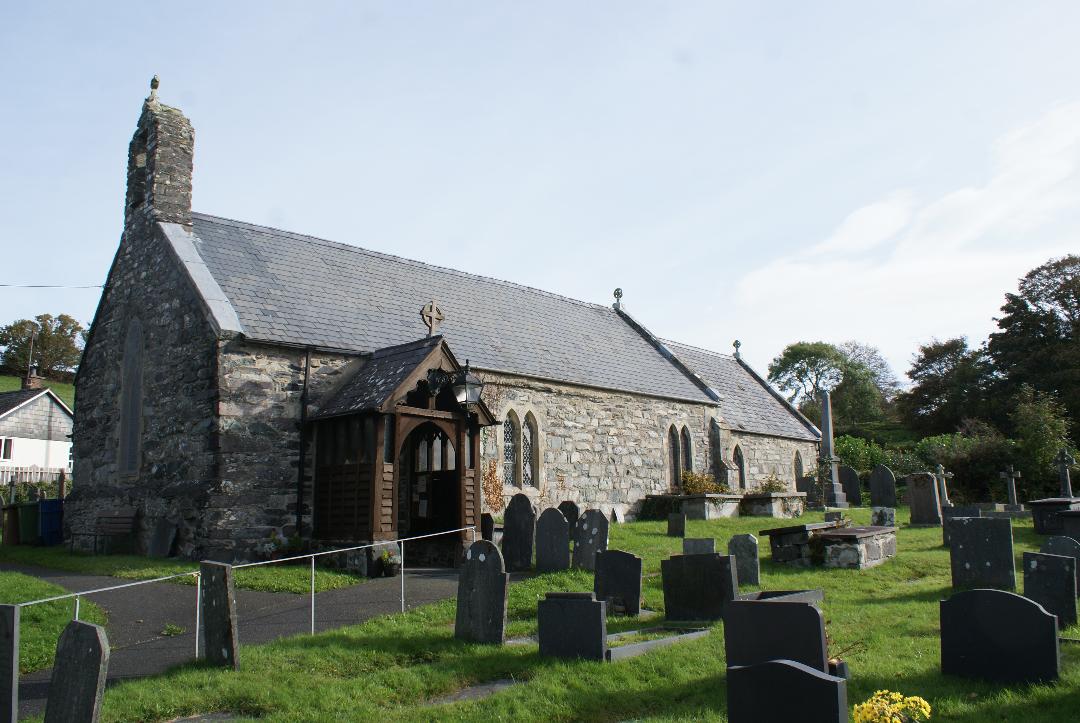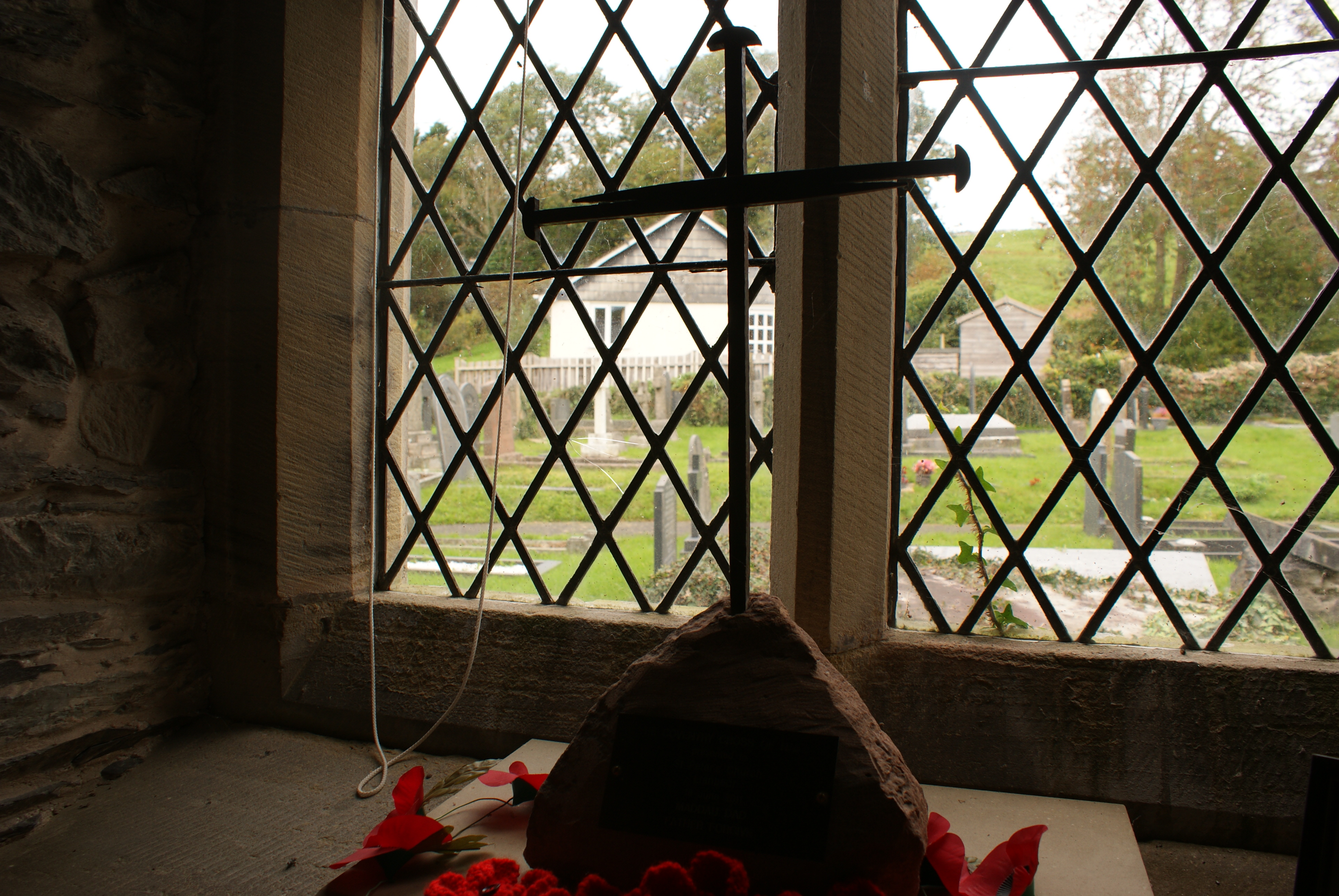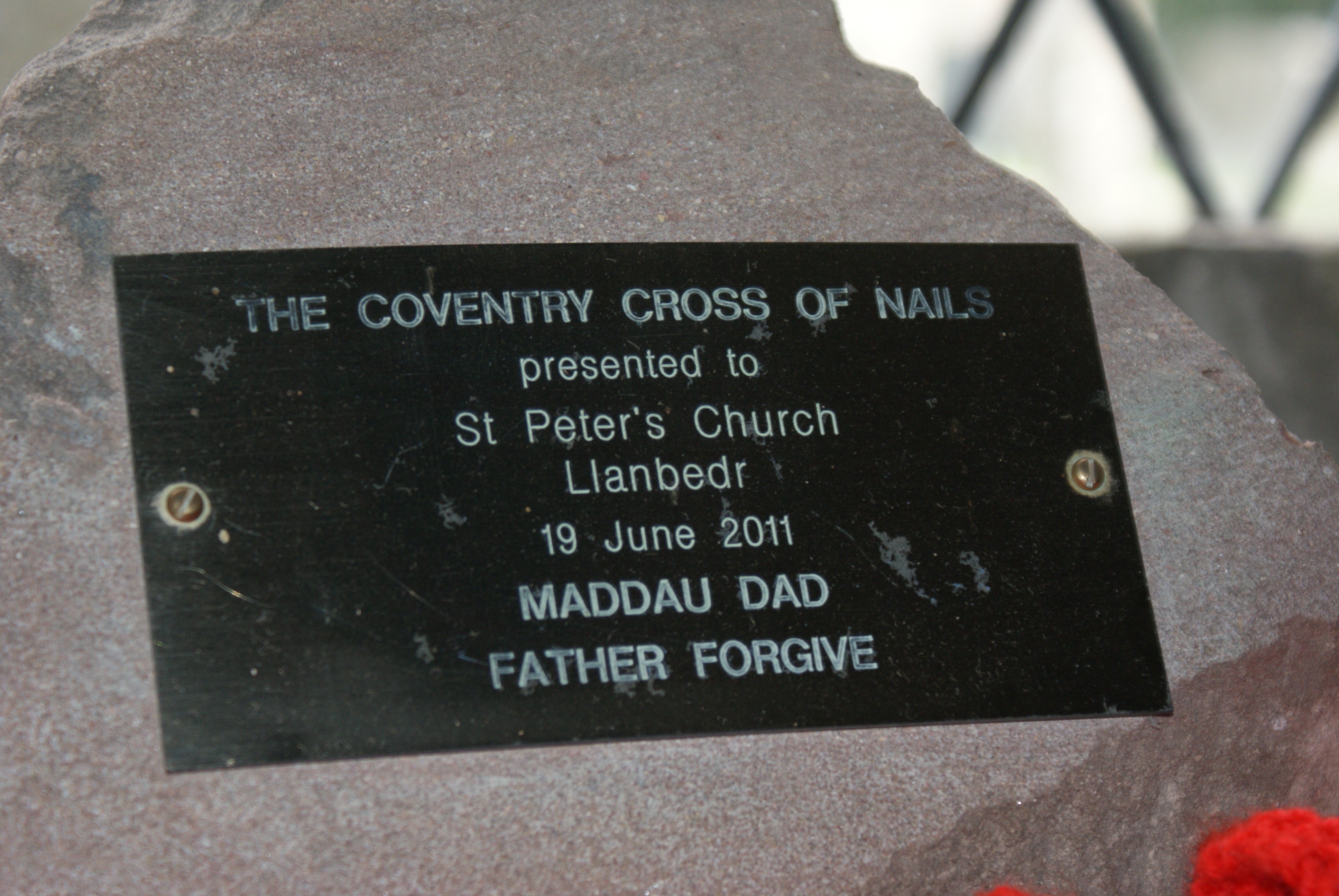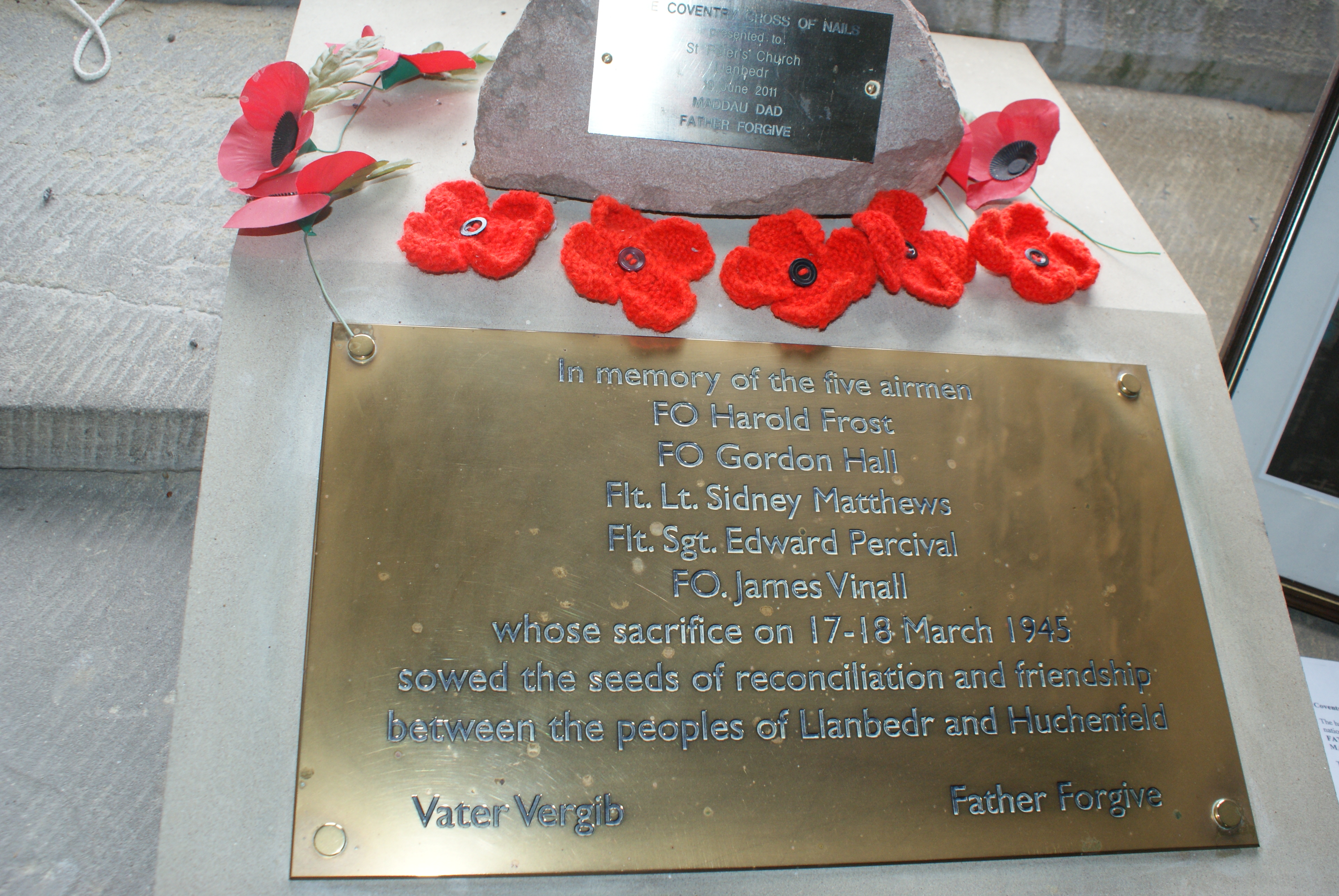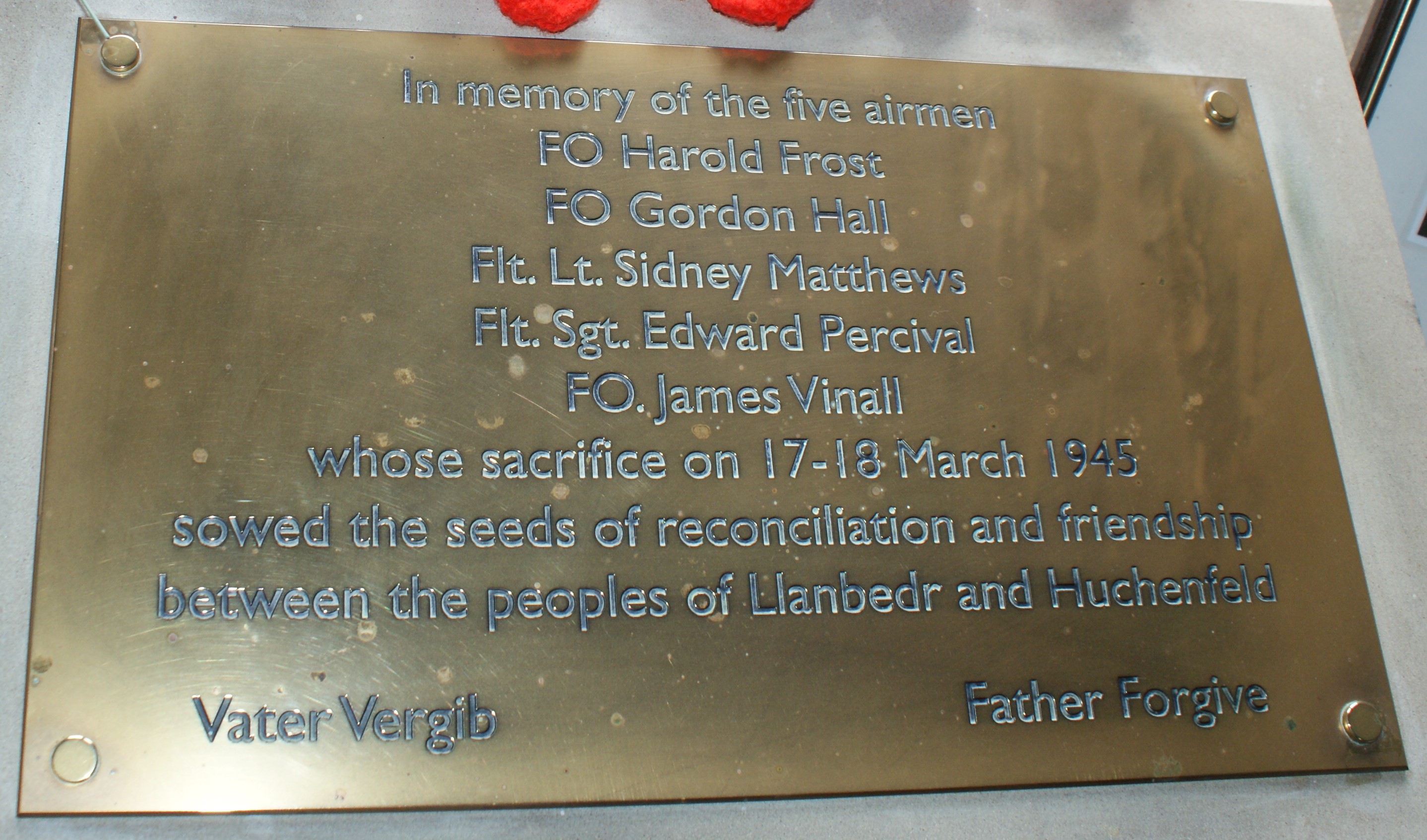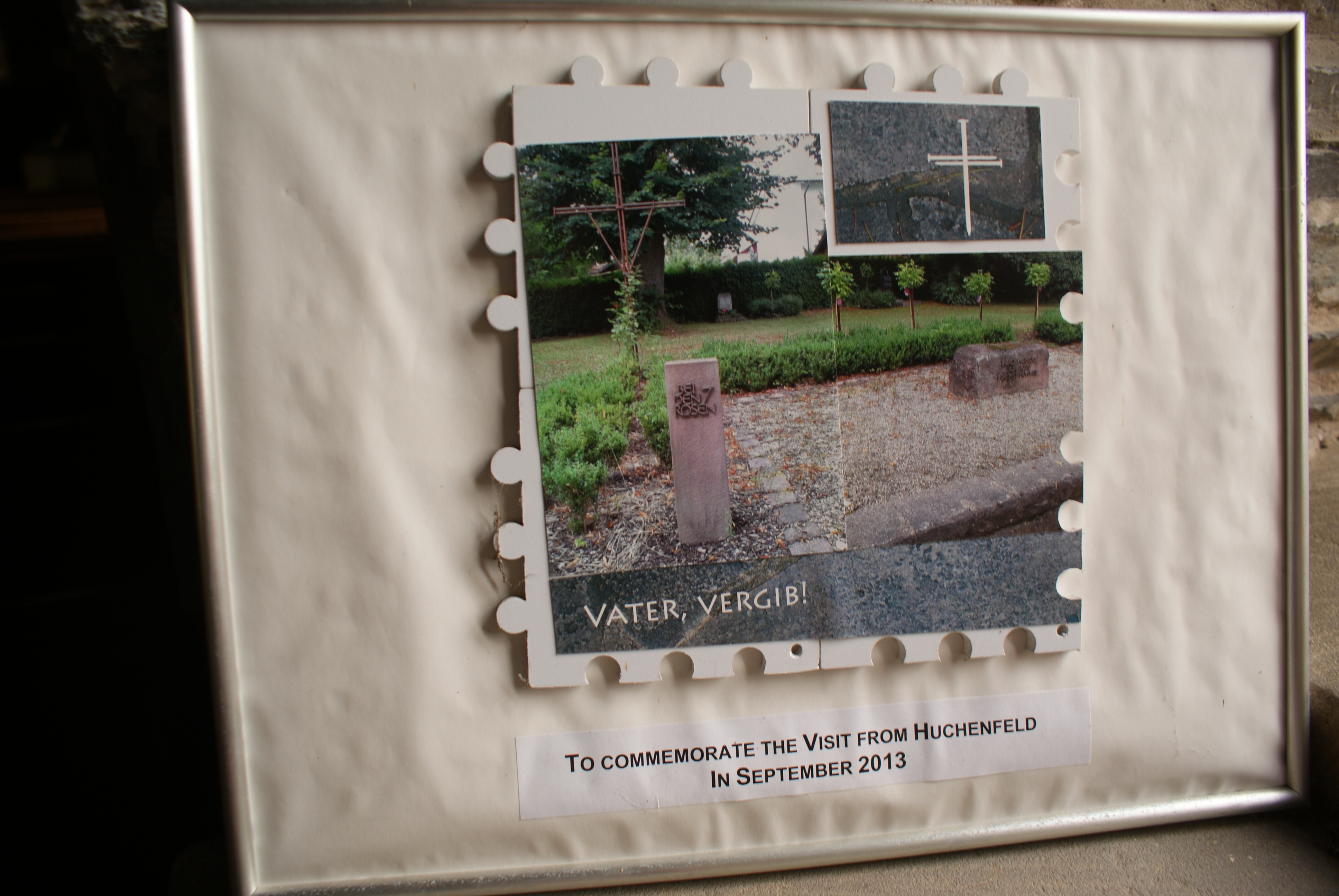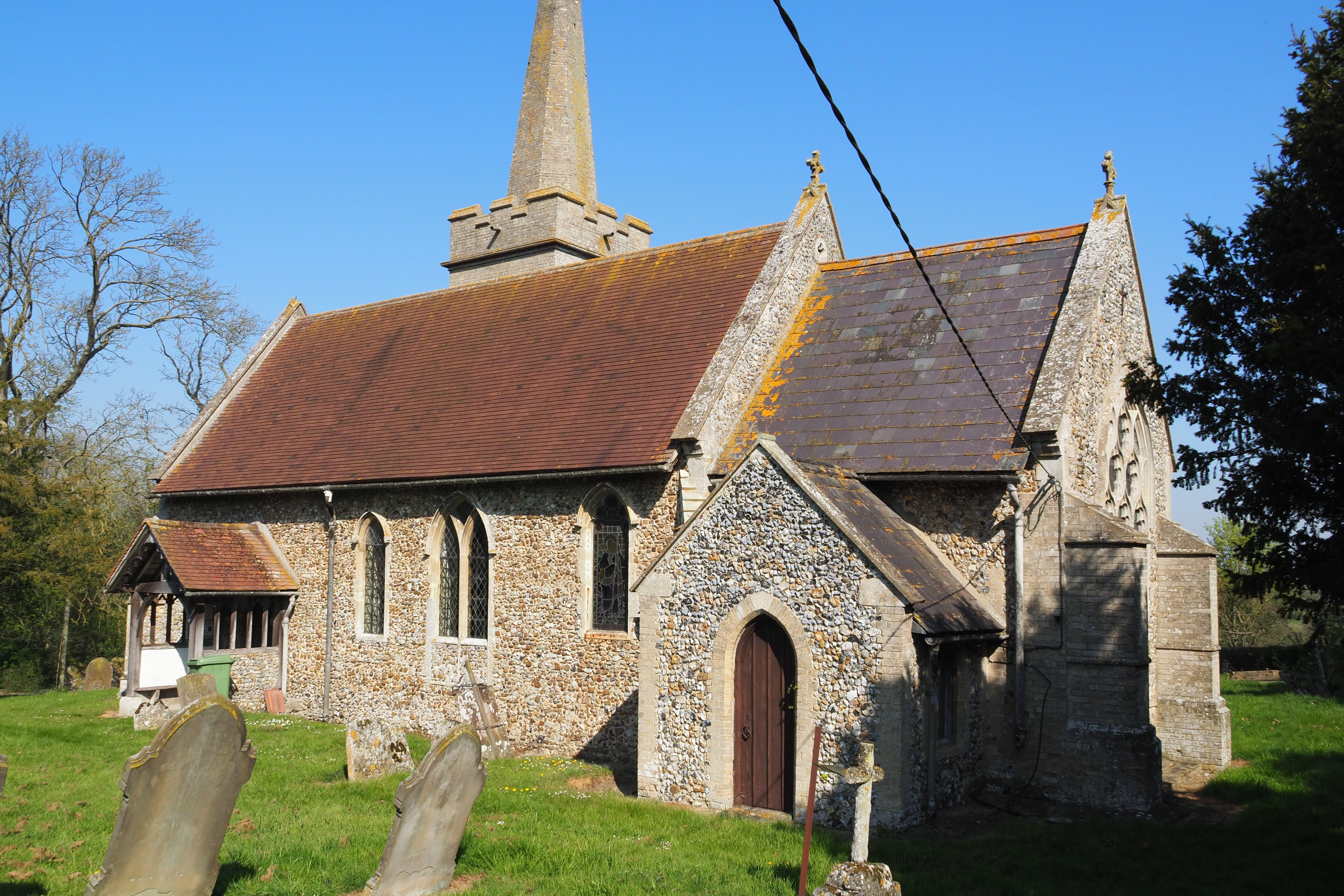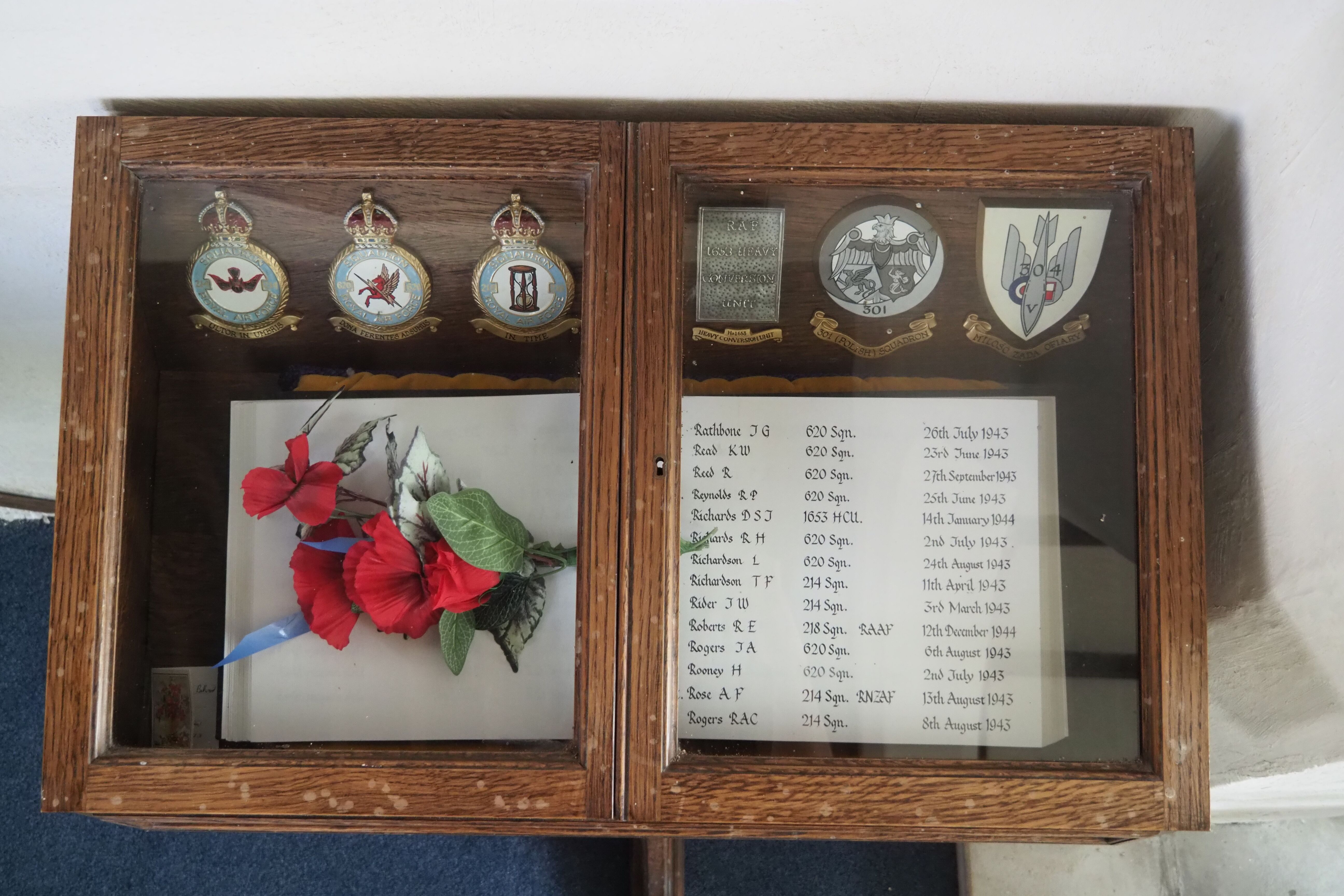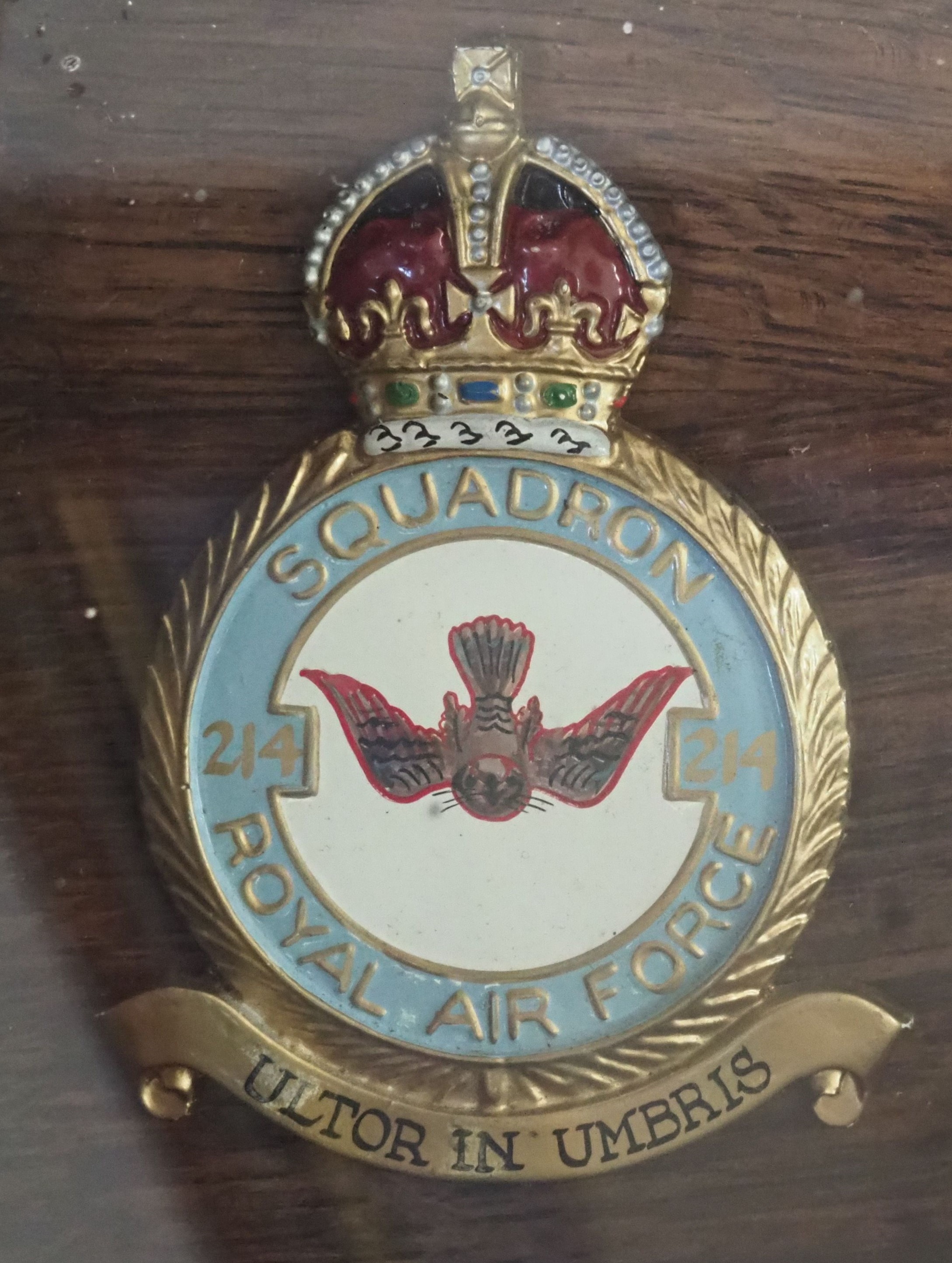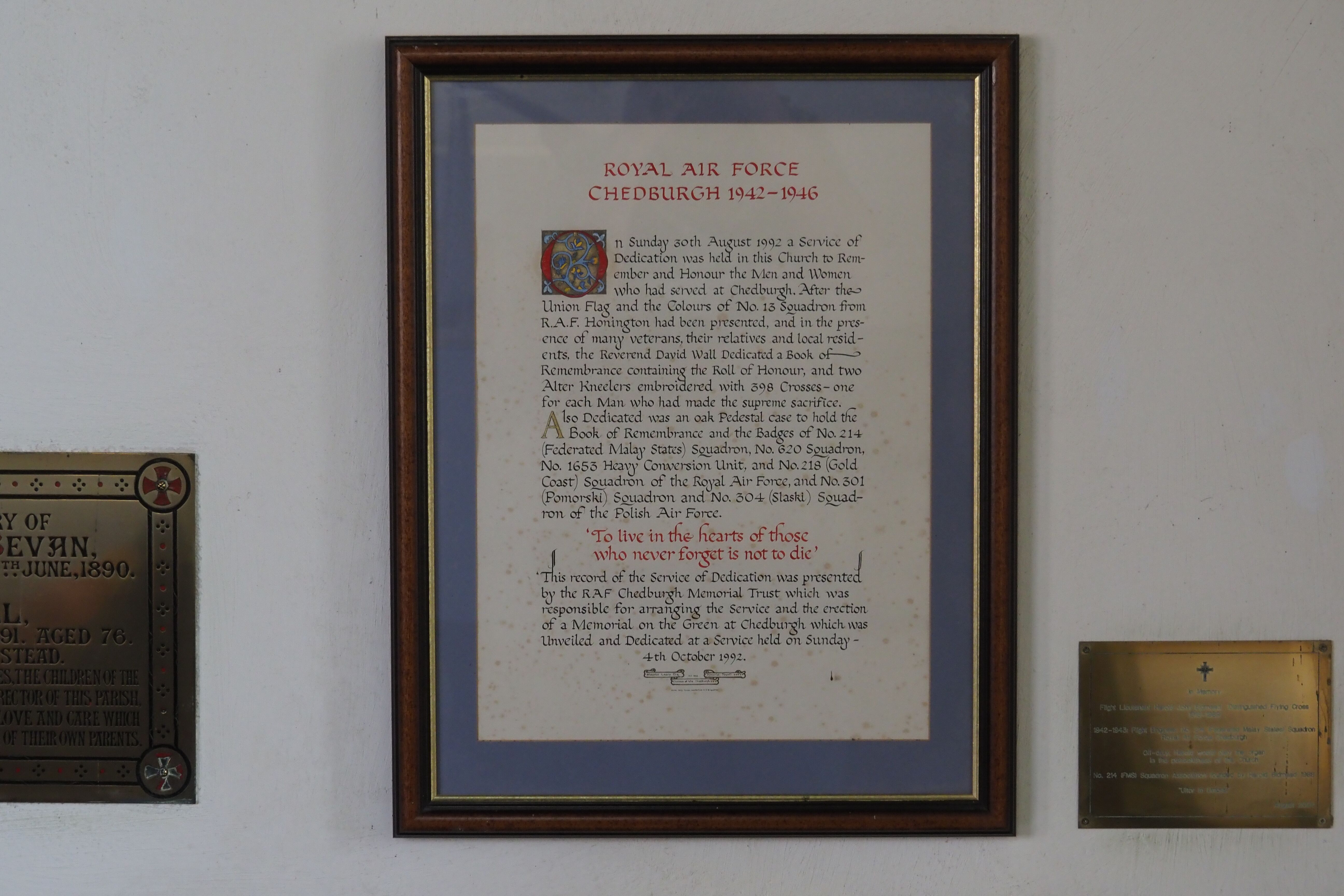| Landed near to Pforzheim, which had been devastated by a Bomber Command attack just three weeks earlier, so emotions were running high amongst the local people. After some interrogation seven of the men were transported by armed guard for a prison camp through what remained of the streets of Pforzheim. An angry mob began to throw stones and were it not for the guards, they would probably have been killed there and then. They reached Huchenfeld and were billeted there for the night in a cellar. During the night, the cellar was raided by a large number of civilian youths, the guard overwhelmed, and the seven airmen dragged onto the streets. Four were shot and murdered in the church yard, whereas the flight engineer was able to break free but was again apprehended and detained in the neighbouring village and was once again subject to an attack by the baying mob, who beat him and shot him in the head. Tom Tate, the specialist operator, and Normal Badley, the waist gunner, were also able to break free from the mob but both were separately recaptured by the authorities the following day and became PoW. Both returned to Germany a year later to give evidence in the trial of 22 of the men and boys who had taken part in the incident. In the hearing it became clear that local Nazi leaders had ordered a lynch mob of Hitler Youth to dress in civilian clothes, posing as outraged villagers. They were to assault the schoolhouse where the RAF men were being held, and take them to their deaths. Seventeen were convicted; three officials were hanged and the others imprisoned. The youths were given lighter sentences.
Much later, a retired pastor from East Germany went to live in Huchenfeld and when he learned of the murders he vowed to erect a memorial in the place where they were killed. Despite some opposition, he got his wish and in November 1992 a plaque was erected on the wall of the church. The widow of Harold Frost attended the dedication ceremony and sensationally, during the service a local, now elderly man, began to sob and confessed to being part of the mob and that he had fired shots at the airmen. Marjorie Frost stepped forward at that point and with great fortitude, publicly forgave him.
John Wynne had been unaware of the fate of his fellow crew for the entirety of his service. After he was demobbed, he became a hill farmer in Wales but was tracked down by a newspaper reporter after news broke of the remarkable occurrences in Huchenfeld during the ceremony. Greatly moved by the news, he and his wife commissioned a local artist to make a wooden rocking horse which was donated to the kindergarten in Huchenfeld. The horse was called Hoffnung, the German word for 'hope', and bore the inscription: "To the children of Huchenfeld, from the mothers of 214 RAF Squadron." It was the start of a close relationship between the Wynnes and the villagers. They were also able to persuade Tom Tate to return to the village- something he swore he would never do- after which he visited many times. |
